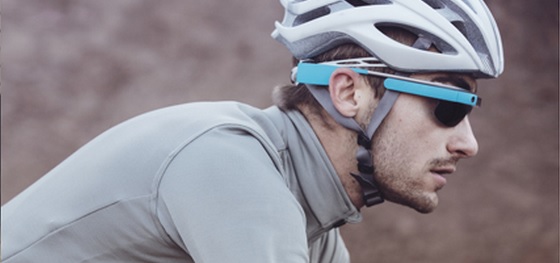
03 Apr Are Wearables The Next Big Thing?
With 1.75 billion people worldwide expected to own a smartphone this year, it’s safe to say that our pocket computers are no longer seen as “the devices of the future”. No, the next big thing in portable technology will be what we wear on our wrists, clothes or heads, otherwise known as ‘Wearables.’
How Wearables Became The ‘Next Big Thing’
According to ArnNet the inception of wearable technology involved a digitised NIKE pedometer that connected to iPods. This exposed the potential wearable technology had within the fitness sector.
Gadgets designed to track health and fitness factors like the FitBit Flex and Jawbone Up were soon introduced to the market. Not just step counters, these easily worn wrist devices measure minutes of activity and calories burned, with other trackers also measuring heart rate
The wearable market took an interesting turn when Google announced it would eventually launch Google Glass, a set of augmented reality glasses with an inbuilt, voice operated computer.
Although the announcement of this device was made two years ago, Google Glass still isn’t available for consumer use. It has been available to developers through Google’s Explorer program to encourage the development of apps for the device, and is expected to be released to the public later this year.
Since Google’s Google Glass announcement, a range of competing smart glass devices have appeared, aiming to be forerunners in this new market.
And now we are seeing the birth of the next trend in wearables, the smartwatch. Companies like Motorola and LG released their first smartwatches in the last month and technology leader, Samsung, is already on to its second. Google has even created its own smartwatch operating system called Android Wear.
–
Currently, smartwatches are designed to be companion pieces to your phones or tablets rather than standalone devices. Which has a lot of critics questioning exactly why they need a smartwatch. An article on digitaltrends questioned why we need an extension of an already sufficient smartphone on our wrists. Another article posted by Gizmodo suggests that smartwatches have no clear objective.
Despite these criticisms, analysts are optimistic about the future of wearables and their uptake. Interestingly, analysts are predicting that the use of wearables in businesses will drive consumer uptake and acceptance of these technologies.
The Enterprise To Make Wearables Mainstream
History may be at odds with this assessment of enterprise and business becoming early adopters of any kind of new technology – tablet computers are still new to many businesses.
But when it comes to wearable technology, we are already seeing many businesses looking towards wearable technology to improve their products, services or internal processes.
Google Glass is a frequently used example of this trend. While this device is still not available to consumers, many businesses and developers are using Google Glasses as a part of their normal work days as a second screen of sorts.
Notably, Virgin Atlantic engaged in a six week trial of Google Glass, hoping the technology would help bring glamour back to flying. Thanks to Google Glass and a SITA ‘dispatch app,’ attendants at Heathrow’s upper class lounge were able to perform check-in tasks while accessing flight details, weather forecasts and local events.
Even fitness trackers are proving useful in a corporate setting. USA’s Bates College in Maine recently introduced fitness trackers into its employee wellness program. The FitBit trackers were distributed to approximately 35 per cent of the employees of the college in mid-February in an effort to encourage employee exercise.
–
An article by fastcodesign suggests that businesses will be quick to pick up on the trend of wearable because of the improvements these devices can offer.
Fastcodesign writes: “wearables can not only make their employees more efficient and better at serving their clientele’s needs; wearables can offer a new level of data tracking, measuring where an employee or customer has gone and what they’ve done.”
Forrester VP and Principal Analyst J.P Gownder explained to Co.Design that businesses will be the driving force that make these devices mainstream. Businesses have the potential to expand the wearables market to the point that 10 per cent of an urban population might be wearing one of these smart, sensor-laden devices.
A report published by Juniper Research in October suggests that 2014 will be “the watershed year” for wearable technology.
The wearables market is ambitiously expected to be worth more than $1.5 billion US by the end of 2014. This is almost double the value of the market in 2013. While these predictions may seem rather ambitious, with a host of exciting wearable technology expected to drop this year (including the much anticipated Apple iWatch), these figures are certainly possible.
So, while smartwatches and smart glasses are dismissed by many as glorified smartphone accessories at the moment, the future may see businesses run by wearables or consumers lining up for the next Apple wearable.



